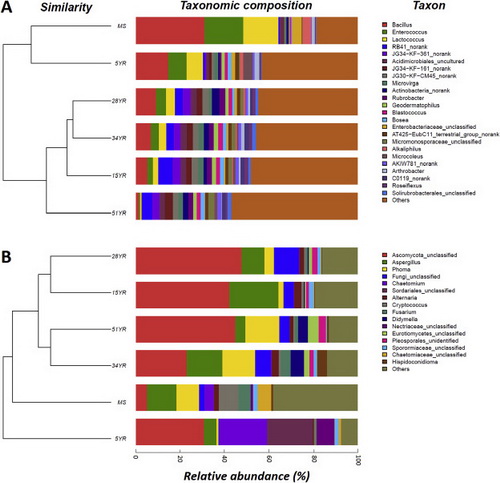Recovery of microbial community structure of biological soil crusts in successional stages of Shapotou desert revegetation, northwest China
Updatetime:2017-04-14From:
【Enlarge】【Reduce】
Microbial community structure of biological soil crusts (BSCs) in successional stages of Shapotou desert revegetation, northwest China, was assessed using Illumina MiSeq sequencing. Bacterial diversity and richness were highest after 15 years, while those of fungi increased along a chronosequence of stabilized dunes. Hierarchical clustering and principal coordinate analysis showed significant differences in bacterial communities between biocrusts and physical crusts, whereas fungal communities clustered into four groups. Each age of BSCs exhibited the same dominant phyla at different proportions. The recovery time for bacteria was more than 15 years, whereas that for fungi ranged from decades to centuries, indicating that fungal richness might be a potential indicator for predicting the degree of BSC recovery.
This research achievement is published on Soil Biology and Biochemistry.
Keywords: Biological soil crusts; Successional stages; Microbial community composition; Bacteria; Fungi

fig. Hierarchical clustering and phylogenetic community composition of bacteria (A) and fungi (B) at the genus level in BSCs of six different ages. Hierarchical clustering was based on 97% similarity. The sequence percentage of the major bacteria (A) and fungi (B) in taxonomic composition was above 1% in at least one sample. MS, 5 YR, 15 YR, 28 YR, 34 YR, and 51 YR represent mobile sand, 5-, 15-, 28-, 34-, and 51-year-old BSCs, respectively.
Appendix




